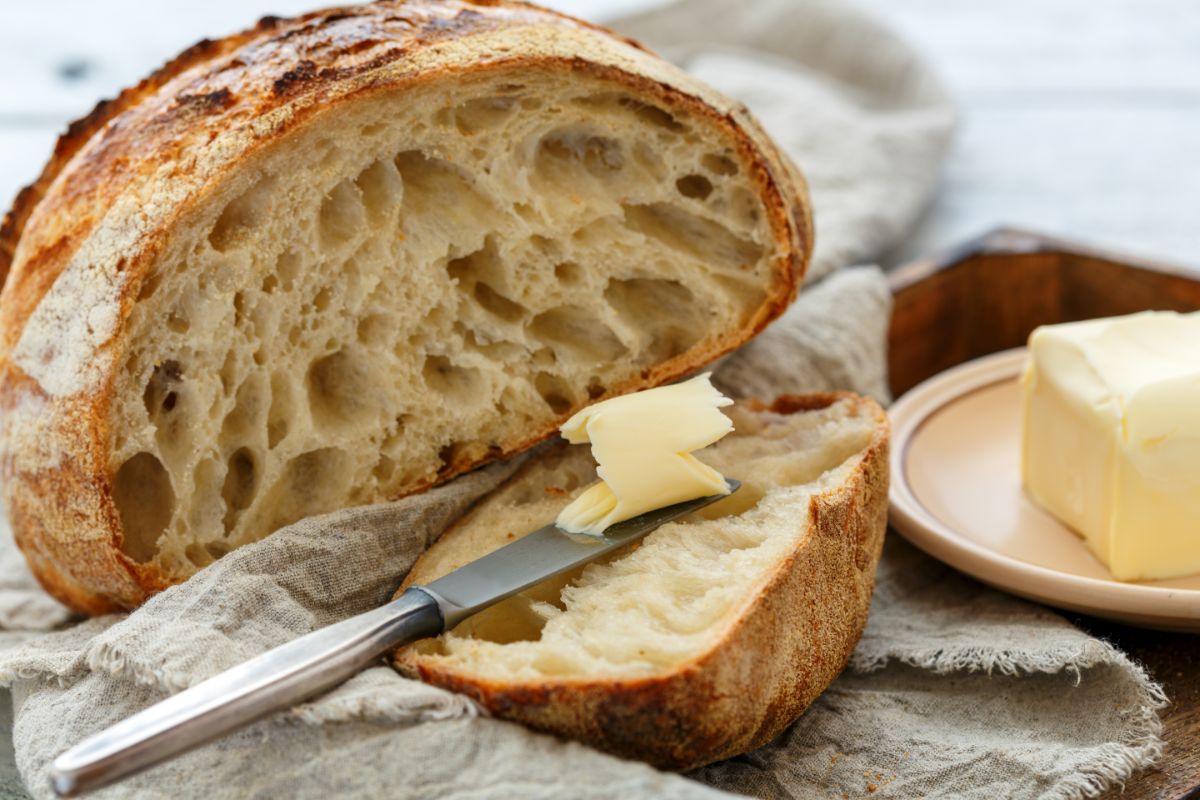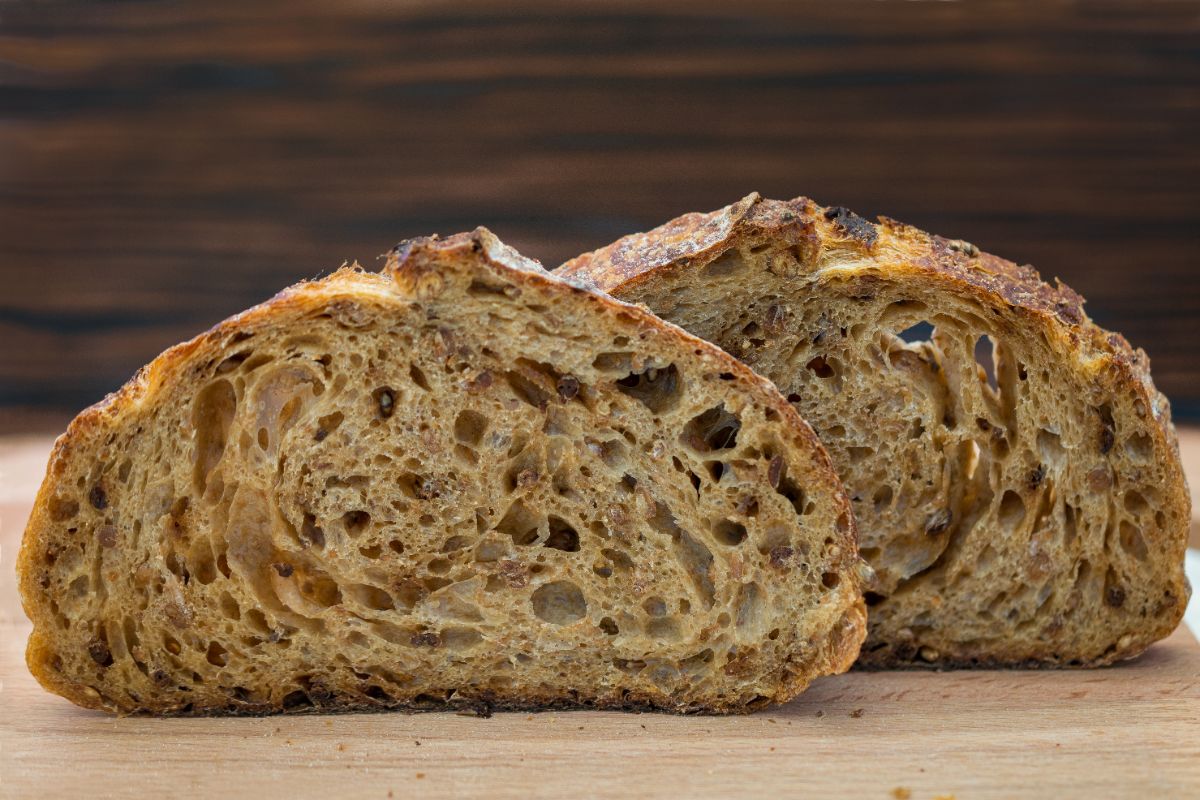
There are many types of bread out there, each having its own charm and character. If you want to try something new, sourdough bread is something you need to put on your to-do list.
Bread made out of sourdough has a particular flavor, more noticeable than in the case of regular bread, but in a good way. Also, you will notice that they have rather large and numerous air pockets inside, as you cut through the bread.
This is another particularity of the sourdough bread, which is closely connected to the way such bread is made. So no, air pockets are not a bad sign.
So, what causes air pockets in your sourdough bread? If you want to have sourdough bread filled with air pockets, you should knead it until it gets soft, not longer. The more you knead the dough, the more the gluten in its content will develop, creating a consistent texture instead of an airy one.
The preparation method for sourdough bread is different
If you were wondering why sourdough is different from regular types of bread, you should know that it’s all in the preparation process.
It may sound easy to make sourdough bread, but the truth is that obtaining such bread can be quite a challenge. Of course, you don’t have to be a professional baker to get sourdough bread, but you should also be ready to have patience and try several times until you get the desired result.
In case you are a person interested and passionate about baked goods and you’re open to trying new recipes, sourdough is certainly something you need to try.
You will love its flavor, chewy texture, and interesting air pockets. Also, in spite of all those air pockets, this type of bread is filling and satisfying. So, don’t be surprised if you’ll want to prepare it again.
Sourdough bread is something that gets perfect through practice and not by following a recipe step-by-step. Yes, there are recipes for sourdough bread, but only by practicing and getting “hands-on” you will succeed in preparing the ideal sourdough bread.
One of the most important aspects you need to remember when making sourdough bread is not to knead it for too long. There’s a false belief that bread dough must be kneaded for a long period.
While this may be true in some cases, if you want your bread filled with big air pockets, you should knead it until it gets soft. The more you knead it, the more the gluten in its content will develop, creating a consistent texture instead of an airy one, so no air pockets.
Sourdough bread requires an adequate starter

Bread is made out of water, flour, and yeasts. While it is true that you can find a variety of yeasts or starters on the market, it would be great if you could prepare your own sourdough bread starter.
It is not difficult to make and it will provide exceptional results for sure. You just need flour, water, and a bit of patience. After five days, you will have the best sourdough starter that will create beautiful air pockets in your bread. Also, once you have the starter, you will never have to make one again.
The first step is to mix flour with water until homogeneous and leave the mixture at room temperature for the entire night. The yeasts that will start to develop in this mixture should be fed, so make sure you do that every day.
Take out a part of the mixture and replace it with fresh water and flour mixture. How to tell your starter is ready to be used? You will notice that it has a rather bubbly aspect, especially in the following hours after you’ve fed the yeasts. Also, it will have a sour yet fresh scent.
At this point, you can use a part for making sourdough bread and place the rest in the fridge. Kept at cool temperatures, the yeasts will develop slower.
Still, you will have to feed it a fresh mixture of water and flour at least once a week. When you want to make a new loaf of bread, you will have to take the mixture out of the fridge and feed it for a few days at room temperature, until it gets active again.
A combination of starter and correct technique
So, what causes air pockets in sourdough bread? Well, it is a combination of using the right starter and correct preparation techniques.
The starter, as mentioned earlier, has a bubbly aspect and will continue to make bubbles as the dough rises, through the fermentation process.
But, in order for these bubbles or air pockets to take place as desired, the kneading of the dough should be kept at a minimum. You see, when the dough is kneaded, gluten binds are formed. This gives the bread a shape that is easy to work with and a smooth texture.
The more the dough is kneaded, the more gluten binds are formed and the dough gets a compact form. This can turn out to be problematic for those air pockets you are trying so hard to obtain for your sourdough bread.
In other words, a wet dough that is not kneaded for too long will produce a bigger number of air pockets, which will be of considerable size as well. Just think about ciabatta for instance, which is a famous type of sourdough bread. It has a wonderful flavor and beautiful air pockets throughout its entire core.
Once the dough has risen for a sufficient amount of time, you will have to gently take it out of its bowl and place it on your work surface. Stretch and fold the dough with caution, so you won’t break those air bubbles obtained during the rise.
Try not to do this for too long, just as in the case of kneading the dough for the first time, allowing the dough to remain airy. The whole point of this second kneading, after the dough has risen, is to give your future bread the shape you desire.
A good tip: When looking to get a good number of air pockets inside your bread, is to opt for flour types that have lower levels of gluten. Less gluten means that those air pockets will have plenty of space to develop, without any stretchy gluten keeping them from forming.
